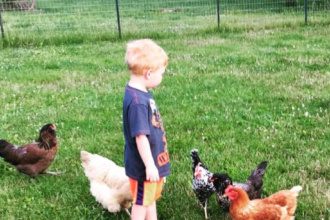As a Dachshund parent, you may have often found yourself worrying about how your pet’s unique body shape might affect its health. Originally bred for hunting, Dachshunds were used to flush badgers and small game from burrows. Their long, slim bodies and short legs allow them to move through narrow tunnels easily, and they can pull prey from tight spaces. However, this body structure, while giving them several advantages for hunting, also puts them at a higher risk of back problems, spinal injuries, ruptured discs, and even paralysis. This is why you will find your vet often advising you against letting your Dachshund run down stairs or jump on furniture too often. They also recommend the “horizontal hold” method when lifting your dog, as it helps keep their back aligned and reduces strain. Because of these risks, many Dachshund owners have started opting for a harness. Compared to a collar leash, a Dachshund harness is way more safe and comfortable for daily walks and playtime.
If you are unaware of the myriad of benefits the best harness for dachshunds can offer, this guide is your starting point. Make the right choice for your dog’s comfort and training!
5 Ways in Which a Dachshund Harness Can Prevent Back Problems in this Breed
Have you ever used a collar and leash for your Dachshund? If yes, you know how the pressure can pull on your dog’s neck. This strain can cause serious neck or back injuries, especially if you need to apply force to control your dog during walks. Collars also aren’t ideal for training Dachshunds because they can slip off during active play. The best harness for Dachshunds is one that distributes the pressure from the leash evenly across their body. This makes it safer and more comfortable for them while making movements. Let us see how buying the best harness for Dachshunds among a sea of options can keep them from severe health problems:
1. Back and Neck Support
Dachshunds are prone to back problems, so it’s essential to choose a harness that provides proper back and neck support. Harnesses are designed in a way that they distribute pressure evenly, especially during sudden movements. This helps prevent any unnecessary strain on your dog’s spine, which can be particularly sensitive.
2. Adjustable and Secure Fit
Harnesses designed specifically for Dachshunds come with adjustable straps for a secure and comfortable fit. This ensures the harness stays in place during walks and prevents it from slipping off. A snug fit also reduces the risk of your pet escaping.
3. Easy to Put On and Take Off
The process of putting on and removing the harness should be easy and stress-free for both you and your dog. Since their backs are quite sensitive, a simple, efficient design will help avoid frustration for them and you both. The easier it is to use, the less likely your Dachshund will become anxious or stressed.
4. Material and Padding
Comfort is crucial when selecting a harness for your Dachshund. Harnesses with soft, breathable fabric provide a great deal of comfort to your dog, almost hugging their backs, especially on warmer days. A padded harness can also reduce the risk of chafing and discomfort during walks.
5. Durability and Longevity
Since your dog will be wearing the harness regularly, it’s important to choose a durable one that can withstand daily use. Look for the best harness for Dachshunds made of strong materials that won’t wear out quickly. Since Dachshunds often pull on the leash, durability is key to ensuring your harness lasts over time.
Types of Dachshund Harnesses
There are three main types of harnesses for Dachshunds: back-clip, front-clip, and dual-clip. Both back-clip and dual-clip harnesses are great options for your dog. These harnesses feature a D-ring on the back to attach the leash, which avoids putting pressure on your dog’s neck or shoulders. This ensures that your Dachshund can move freely without feeling restricted.
Unlike collars, a properly fitted harness can also help prevent neck and back injuries, which are particularly important for Dachshunds. This breed is at higher risk for Intervertebral Disc Disease (IVDD), a condition where the discs in the spine bulge or rupture, causing severe pain. If untreated, IVDD can even lead to partial or full paralysis. Therefore, choosing the best harness for Dachshunds is critical to a dog’s well-being.
Dachshund Harness Size: How to Measure Your Dog Correctly
When looking for the best harness for Dachshunds, one of the most important factors in selecting the right size. It’s essential to measure your dog correctly to ensure a comfortable fit. Use a flexible measuring tape to measure around your dog’s neck and chest, just behind the front legs. Be precise with these measurements, as a harness that’s too tight or too loose can cause discomfort or even allow your dog to escape.
Once you have the measurements, check the size range for the harness you’re considering. Another useful trick is the two-finger method. After putting the harness on your dog, try sliding two fingers between the harness and their body. If you can fit your whole hand in, the harness is too loose. If you can only fit one or no fingers, the harness may be too tight.
Look for harnesses that feature adjustable straps. This allows you to make small changes to achieve a better fit. Ensure there’s enough space for comfort, but not so much that the harness becomes too loose. A well-fitted harness will allow your Dachshund to move freely without feeling restricted.
Conclusion
A Dachshund harness is an essential investment, offering several benefits over traditional collars. It helps minimise the risk of strain, gives you better control during walks, and protects your dog’s back, neck and spine from potential injuries. To find the best harness for Dachshunds, make sure to accurately measure your dog and look for key features such as breathable materials, adjustable straps, and durability.
With the right harness, your Dachshund will feel more comfortable, less anxious, and will be able to enjoy their walks and outdoor activities to the fullest. You’ll also have peace of mind knowing that you’ve made the right choice for their health and safety.













